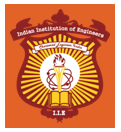THE ACADEMIC PROGRAMME OF THE INSTITUTION MAINLY CONSISTS OF SECTIONS ‘A & B’ EXAMINATIONS, POPULARLY KNOWN AS THE AMIIE EXAMINATION.
DIPIIE in Aeronautical Engineering
About
Aeronautical engineering is a branch of aerospace engineering focused on the design, development, and maintenance of aircraft and spacecraft. It involves working with aerodynamics, materials science, propulsion, avionics, and structural mechanics to improve flight safety, performance, and efficiency. Aeronautical engineers play a crucial role in designing airplanes, helicopters, drones, and other airborne technologies used in commercial, military, and space exploration fields.
Career
A career in aeronautical engineering offers a dynamic and exciting path for individuals passionate about aviation and space exploration. Aeronautical engineers specialize in the design, development, and testing of aircraft and spacecraft. They work with cutting-edge technologies in aerodynamics, propulsion, avionics, materials science, and structural design to improve flight safety, efficiency, and performance. Professionals in this field are responsible for creating airplanes, helicopters, drones, and even spacecraft, ensuring these vehicles are safe, efficient, and reliable for commercial, military, or space exploration purposes.
Aeronautical engineers can pursue a variety of career paths, including roles in research and development, design, testing, manufacturing, and maintenance. These engineers work for aerospace companies, government agencies like NASA or the Department of Defense, or private companies in the aviation sector. Additionally, they may also work in universities or research institutions, advancing the future of flight technology.
This field offers opportunities for career advancement, with potential to specialize in specific areas like propulsion systems, avionics, or flight dynamics. It also provides the chance to contribute to innovations in sustainable aviation, space exploration, and new flight technologies, making it a rewarding and impactful profession.
Job Prospects
Strong demand in aerospace, defense, and aviation industries.
Opportunities with government agencies like NASA and the Department of Defense.
Roles in design, testing, manufacturing, and research.
Career growth in emerging technologies like drones and space exploration.
Remuneration
Remuneration for aeronautical engineers varies by experience and location. Entry-level salaries start around $60,000 annually, while mid-career professionals earn between $80,000 and $100,000. Senior engineers and specialists can earn upwards of $120,000 to $150,000.
Project Work
Candidates are required to submit a Referee / Project Report to complete the requirement of the Technician Membership Examination (TMIIE-DIPIIE-DMIIE).
A candidate of Technician Membership Examination (TMIIE-DIPIIE-DMIIE) can take up submission of his report only after he has obtained a pass in Part-I of TMIIE-DIPIIE-DMIIE Examination and only after he/she has appeared and obtained40% marks in at least 5 subjects of Part-I of TMIIE-DIPIIE-DMIIE Examination.
Project Report / Referee Report
Each candidate appearing for Technician Membership Examination under the scheme of examination as approved by Govt. of India, is required to submit the Project Report in bound volumes.
Project Report detailed requirements and Project Report applications form is given in Institution website .The Project Report Application should be submitted with a fee.
Final pass Certificate will be issued only after Project Report is approved. Candidate is also required to pay certification fee and submit experience certificate for minimum period of 3½ years on employers letterhead.
PART - 1
PART - 2
- STRENGTH OF MATERIALS
- FLUID MECHANICS
- MATERIAL SCIENCE & ENGINEERING
- WORKSHOP TECHNOLOGY
- ENVIRONMENTAL ENGINEERING
- METROLOGY
- TECHNICAL ENGINEERING DRAWING
- THEORY OF MACHINES
- MANFACTURING TECHNOLOGY
- CNC MACHINE
- THERMAL ENGINEERING
- AUTO ENGINE COMPONENTS
- AUTO DRAWING & C.A.D.
- AUTO ELECTRIC EQUIPMENT
- AUTO CHASIS & BODY
- INTERNAL COMBUSTION ENGINE
- NETWORK THEORY
- POWER PLANT ENGINEERING
What Is AMIIE?
Full form of AMIIE is “Associate Member of the Indian Institution of Engineers”. AMIIE is a professional certification given by Indian Institution of Engineers (IIE).

